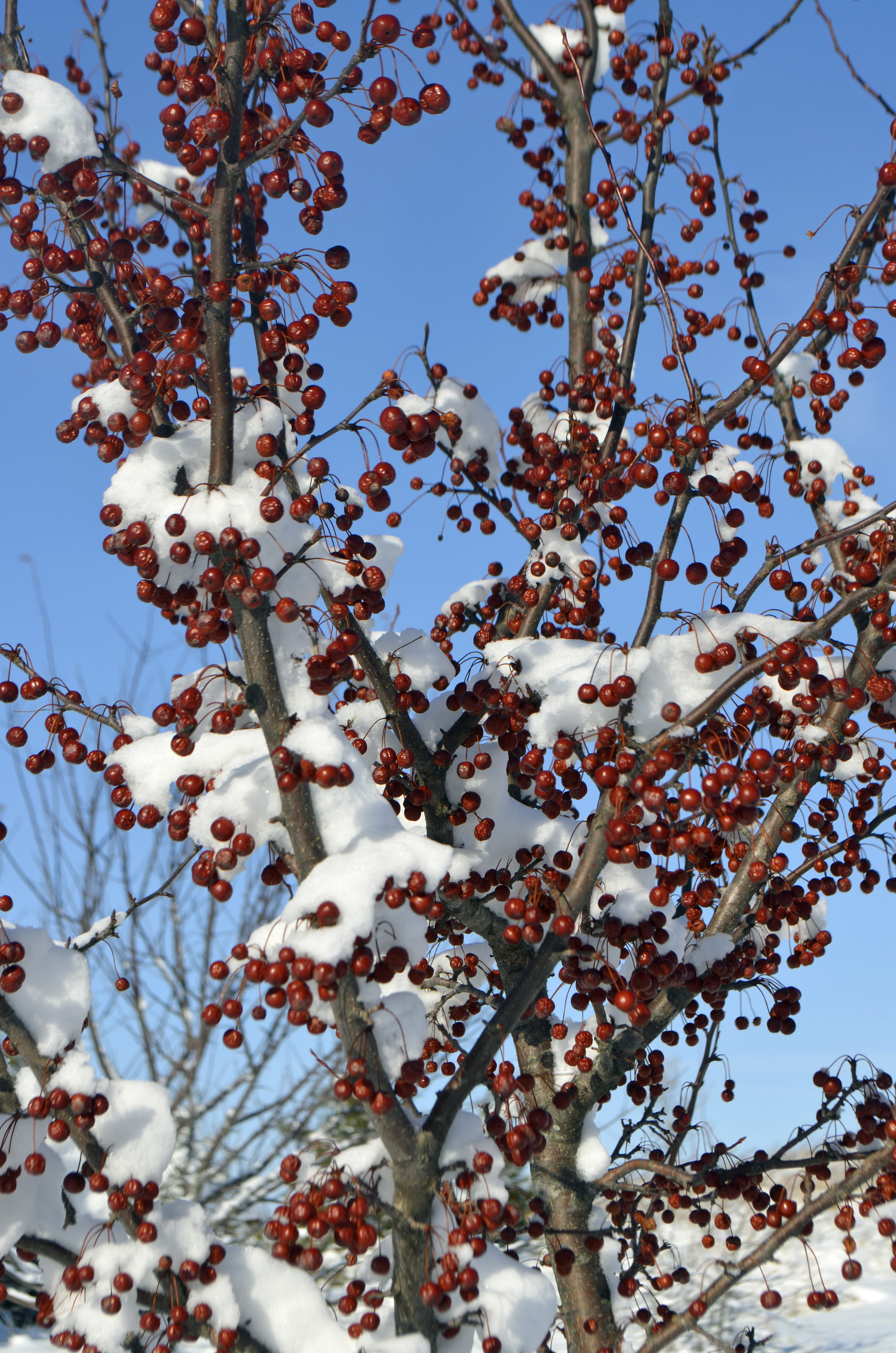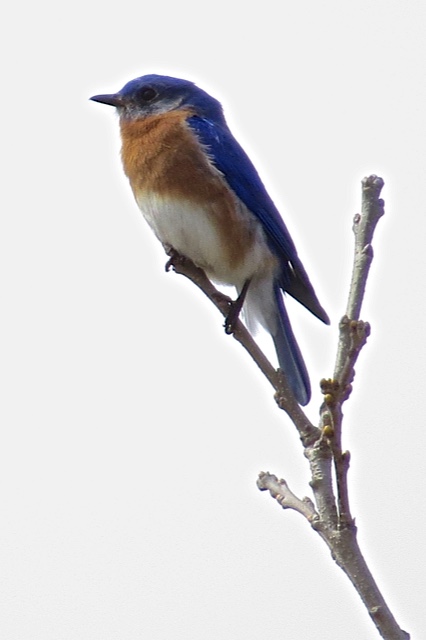Our feathered friends have been greatly impacted by late winter and early spring storms. Northern Wisconsin received frequent and heavy storms in April, while in southern Wisconsin we received two record breaking snow storms totaling 12 inches the third week of April. It was beautiful to see a snow covered landscape and we were rewarded with seeing tracks and body-slide marks from a pair of river otters at the sanctuary!
However, it is difficult to watch the birds trying to survive and it is important to help to the birds that we can. Some species that are impacted by the late storms cannot be helped, like the nesting sandhill cranes at Otsego Marsh and the Virginia rail that walked across our deck on April 17.
A sandhill crane remains on the nest through an April snowstorm. Photo by Richard Armstrong
Many other species of birds can be helped during storms and one way is to keep the bird feeders full with a variety of seeds. Our friend, John Kaiser, has been busy keeping feeders full outside of Hayward for a flock of 400 common redpolls. John really enjoys watching the birds, taking photos of them, and sharing photos and observations with friends.
A redpoll oasis. Photo by John Kaiser
Another way to help birds out is to plant trees and shrubs that provide food and cover to help the birds during critical times. A perfect strategy is to have conifers adjacent to feeding stations. At the Kampen Road residence we expanded our spruce/white pine windbreak to help block the wind as well at provide cover for the birds.
This windbreak provides essential shelter for birds in winter storms. Photo by Mark Martin
In addition to the older conifers, we planted spruce, white cedar, red osier dogwood, American hazelnut along with crab apples and apple trees. An eagle scout’s project involved fencing the dogwoods to protect them from hungry rabbits and deer and the plantings are looking great after only a few years. We also prune the apple trees and leave the cuttings in a brush pile providing winter food and cover for the rabbits.
While not its favorite, a robin feeds off of crabapples after an April snowstorm. Photo by Mark Martin
Usually at this time of year, American robins are finding plenty of worms and getting ready for the nesting season. We often see our first broods of robins on Mother’s Day. This spring the robins are trying hard just to survive. We have seen them feeding on sumac, crab apples, and on the few remaining apples hanging on the trees. These shrubs and trees are not preferred food but will help them survive during these difficult times. Jacqueline Komada, summer intern, counted seven robins, a black-capped chickadee, a song sparrow, and a fox sparrow feeding in our sumac patch on the hill above the pond.
Jacqueline Komada, Goose Pond intern this summer, is looking forward to planting trees and shrubs. Photo by Mark Martin
Jim Edlhuber, wildlife photographer from Waukesha County enjoys planting trees and shrubs for the birds as well at photographing them. Jim recently wrote “While birding Lake Park in Milwaukee one of the highlights was watching the northern flickers, yellow-shafted feeding on a couple of clumps of staghorn sumac. Three or four northern flickers hit these plants hard for seeds probably with anticipated snow coming and the ground having 4″-5″ of fresh snow down now. I have never seen northern flickers on sumac before. Many American robins and black-capped chickadees hit these plants hard too and while I was there, a pair of eastern bluebirds even checked out the seeds but did not stay.”
A beautiful northern flicker helps itself to sumac. Photo by Jim Edlhuber
Jim also wrote “Getting people to plant things for birds? We can't do enough of that. We plant fruit bearing trees every year and a lot of them, just for the BIRDS!” This spring Jim is planting over 200 stems of 12 species ranging from dogwoods to swamp white oaks.
Crabapple trees are both useful and beautiful! Photo by Mark Martin
Crab apples are an excellent species to plant in your yard. In addition to providing color in May the blossoms also provide nectar for bees. There are many varieties of crab apples and we recommend planting varieties that “provide food for the birds” by holding their fruit over winter into spring. Three excellent books for selecting trees and shrubs to plant are:
Douglas Tallamy, Bringing Nature Home – How You Can Sustain Wildlife with Native Plants
Steve Kress, The Audubon Society Guide to Attracting Birds
Mariette Nowak, Birdscaping in the Midwest
We are fortunate to live in Columbia County where for many years the County has a tree and shrub program. This year they sold over 40,000 stems to land owners that are excited to help birds and other wildlife. If you would like to help us plant Washington hawthorns, red osier dogwoods, and white cedar, please contact us at goosep@madisonaudubon.org.
Written by Mark Martin and Sue Foote-Martin, Goose Pond Sanctuary resident managers

























